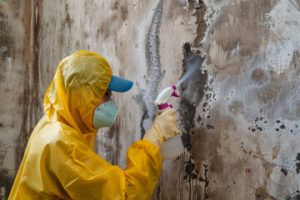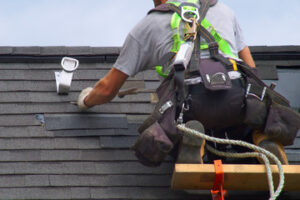Mold attacks organic materials, particularly those containing carbon: starches in adhesives, sizings and cloth; proteins in leather, parchment, animal glues and gelatin; and cellulose, which is found in papers, art on paper supports and photographic prints and negatives. Mold damage weakens these materials and compromises their integrity.

Remove any damaged material that cannot be effectively cleaned. Correct the problems that caused the moisture problem in the area to prevent mold spores from becoming airborne. Contact Mold Remediation Provo for professional help.
Mold inspections are the first step in a remediation project and help identify the scope of the problem. They can be done in homes and commercial buildings. Mold inspections typically begin with a visual examination of the affected area to check for signs of mold and moisture damage. This may also include the use of tools, such as moisture meters or infrared cameras to locate hidden areas that can’t be accessed visually.
Mold inspectors have a deep understanding of the interaction between mold and building structures, plumbing systems, HVAC and more. They can also understand the conditions that allow mold to grow and thrive, and can use their expertise to identify problems that aren’t immediately obvious to a homeowner or business owner. This understanding allows the inspector to develop a more targeted and effective remediation plan.
Following a thorough initial mold inspection, the next step is containment. The inspector will seal off the area with a hygienic containment barrier, such as plastic or polyethylene sheeting. This will prevent airborne mold spores from spreading outside of the contained work area. Air samples will then be taken to measure the concentration of mold spores inside and outside of the containment zone. This testing will help to determine if the level of spores in the air is acceptable after the remediation process.
Surface sampling is also performed using swabs or tape lifts to test for the presence of mold on certain surfaces, such as drywall, carpet, flooring and more. This testing helps to ensure that the surfaces that were cleaned have been successfully sterilized. It will also confirm that no traces of spores remain in the surrounding areas.
Once the remediation is completed, a clearance test is conducted to verify that all of the mold has been removed and that the home or business is safe for occupancy. Clearance tests are often required by real estate agents and buyers prior to closing, and they can help reduce the risk of future mold problems by demonstrating that the property has been fully remediated. Having an independent company perform the testing will guarantee that the results are accurate and not influenced by the remediation contractor.
Containment
When mold spores are disturbed, they become airborne and can travel to areas of the property that were not affected by the work being done. Isolating the work area by establishing containment prevents this from happening, which reduces cross contamination and saves time and money in the long run.
Mold spores can cause respiratory problems for building occupants, especially those with pre-existing conditions like allergies or asthma. These spores also damage building materials and negatively affect indoor air quality, which is why containment is an important step in the mold remediation process.
For this step, technicians construct a barrier to separate the work area from unaffected areas of the property. This can involve creating an airlock using a double layer of polyethylene sheeting or an airtight decontamination chamber that is connected to the work area with fans and duct tape. This creates negative air pressure within the isolated area, preventing spores from moving between the clean and contaminated areas of the property.
Depending on the extent of the mold growth, the work area may require full or limited containment. For example, if the mold is found in a crawlspace or pipe chase, full containment may be necessary to protect workers from contaminants such as asbestos and natural gas. In these cases, an oxygen tester is used to ensure that a safe level of oxygen is present in the space before it is sealed.
In addition to containment, technicians use personal protective equipment (PPE) to prevent harmful contact with the mold spores. This includes disposable gloves, goggles, and N-95 respirators. These tools not only help workers avoid exposure to spores, but also comply with EPA safety regulations.
By implementing these containment and PPE protocols, Rytech technicians can safely remove and clean the affected areas without compromising indoor air quality in the rest of the property. This step in the process also helps to ensure that a successful mold cleanup is completed and that the building can return to normal operations as soon as possible. Without containment, mold spores can spread to areas outside the original work area and trigger additional damage and expensive restoration costs.
Removal
Mold Remediation is a process of identifying and addressing the presence of fungi in a home or business to restore a safe environment. It involves assessment, containment, removal, and restoration. It requires specialized techniques to safely eliminate the growth of mold, including air scrubbing and HEPA vacuuming, and antimicrobial solutions. It also involves identifying and rectifying the moisture source to prevent future mold growth.
The first step in mold remediation is a thorough inspection. This includes examining hidden areas, such as basements and attics. It also involves using tools such as humidity meters and spore traps to identify the presence of airborne mold spores. Once the inspection is complete, the technician will document the findings and prepare a remediation plan.
During the containment phase, the technician will set up an anteroom to serve as an entrance into the area requiring attention. This will help reduce the amount of spores that reach unaffected areas during the remediation process. The anteroom will also allow technicians to easily clean their equipment and change protective gear. During this process, it’s important to use protective equipment such as masks, goggles, and gloves. A HEPA vacuum and a negative pressure HEPA air filtration system are also helpful.
Mold spores are spread via air and can be transported to unaffected areas, so effective containment is essential. In addition to the anteroom, the mold remediation team will use plastic sheeting and duct tape to seal off the area. It is also essential to use a dehumidifier and air blowers to dry the affected area. This is a crucial step because moisture is the most common cause of mold in homes and businesses.
Once the containment process is complete, the mold remediation company will begin the cleaning and sanitization of the affected area. This process will include removing porous materials such as carpeting and drywall. It is also important to disinfect surfaces, such as furniture, drapes, floors, and walls, with a disinfectant that is designed to kill mold. It is also recommended that non-porous surfaces be sealed with an antifungal paint after they are cleaned to prevent future spore growth.
Restoration
Once mold spores have been removed from the home, it is important that any material damaged by mold or water damage be restored. This process can include repairing or replacing insulation, carpeting, and drywall. It can also involve refinishing wood surfaces and re-painting rooms affected by mold. Depending on the extent of the mold growth and the extent of the damage, this may require extensive work and cost.
It is important to have professionals complete the restoration work because of the risk of re-infestation and ongoing health issues for anyone with allergies, asthma or compromised immune systems. It is also important that the underlying cause of the mold infestation be resolved, as this can prevent future problems and prolong the life of building materials.
A mold restoration company should have a professional-grade air quality testing device to measure the levels of mycotoxins in indoor air. Mycotoxins are the poisonous byproducts of some molds and can be extremely dangerous to sensitive individuals. The results of the testing will help a remediation contractor determine whether specialized mycotoxin decontamination is needed.
If an infected building has been left unattended for a long time, it may be necessary to remove all structures, including wood framing, that are affected by mold. This can be costly and requires the expertise of a qualified professional.
Mold remediation should only be completed by a licensed and insured company. It is important to choose a company with experience in remediation and cleaning up mold in homes and commercial buildings. It is also essential to check that the company has insurance and is bonded. This will protect you in the event of any property damage or loss of valuable items during the cleanup process.
Prevention is an important step in preventing mold growth, but it can be challenging to stop mold before it starts. The best way to prevent mold from growing is by controlling moisture, insulating the home and checking regularly for leaks. Preventive measures also include regular inspections and maintenance, such as cleaning gutters and ensuring that there is adequate drainage around the foundation of the home.


